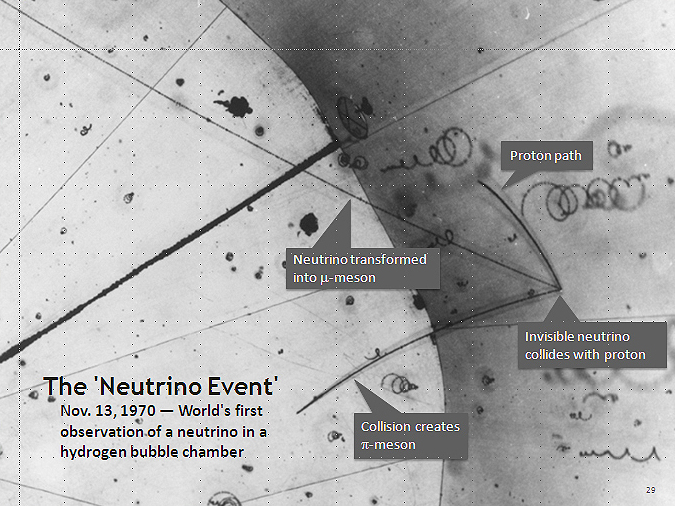A neutrino is a fermion (building blocks of everyday matter). The mass of the neutrino is much smaller than that of the other known fundamental particle. The neutrino got its named because it is electrically neutral and because its mass is so tiny (-ino) that it was originally thought to be zero.
Neutrinos are very difficult to detect experimentally. They do not interact with the electromagnetic force because they are electrically neutral and not very much with the gravitational force because they have such tiny mass. Neutrinos typically pass through normal matter unimpeded and undetected.
A neutrino is represented by the Greek letter Nu—symbol v.

Wikimedia commons Public Domain
For an analogy watch this Minute Physics video ‘What is a Neutrino?’